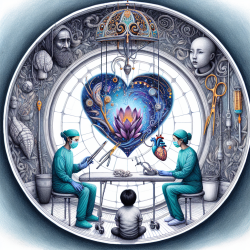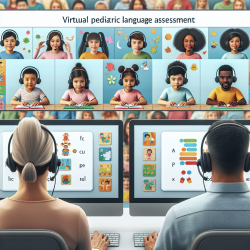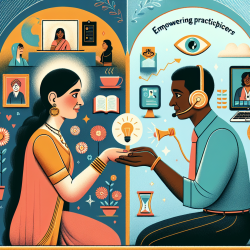Introduction
In the realm of speech-language pathology, understanding the emotional and imaginative aspects of communication can significantly enhance therapeutic outcomes. The research article "Wounds and Wonder: Emotion, Imagination and War in the Cultures of Romantic Surgery" by Michael Brown offers valuable insights into how emotion and imagination were perceived and utilized in the Romantic era, particularly in the context of surgery. By examining the writings of John and Charles Bell, this research provides a unique perspective on the intersection of emotion, imagination, and professional practice.
The Romantic Era's Emotional Landscape
The Romantic era was a time when emotions were considered the pinnacle of human experience, especially in the context of war. Surgeons like John and Charles Bell capitalized on this cultural narrative to bridge the gap between civil and military spheres. The Bells' work highlights the complexity and ambiguity of emotions in professional settings, offering lessons that can be applied to modern therapeutic practices.
Implications for Speech-Language Pathologists
Understanding the emotional and imaginative dimensions of therapy can lead to more effective interventions for children. Here are some ways practitioners can integrate these concepts into their practice:
- Emotional Awareness: Cultivate an awareness of the emotional states of children during therapy sessions. This can enhance the therapeutic relationship and improve outcomes.
- Imaginative Engagement: Use imaginative play and storytelling as tools to engage children and facilitate communication. This approach aligns with the Romantic notion of imagination as a powerful force for healing.
- Professional Reflection: Reflect on your own emotional responses and how they influence your interactions with clients. This self-awareness can lead to more empathetic and effective practice.
Encouraging Further Research
The complexities of emotion and imagination in therapeutic contexts warrant further exploration. Practitioners are encouraged to delve deeper into these topics, perhaps by examining historical perspectives like those offered by the Bells. Such research can provide valuable insights into how emotions and imagination can be harnessed to improve therapeutic outcomes.
Conclusion
Incorporating the lessons from the Romantic era's understanding of emotion and imagination can enhance the practice of speech-language pathology. By fostering emotional awareness and imaginative engagement, practitioners can create more effective therapeutic environments for children. To read the original research paper, please follow this link: Wounds and Wonder: Emotion, Imagination and War in the Cultures of Romantic Surgery.










